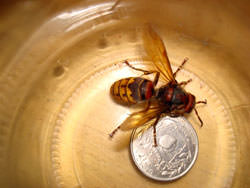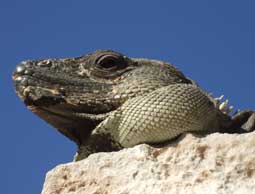
Courtesy Stock.XCHNG
Staking your tomato plant could keep the fruit from sunburning during hot July weather.
It’s early July, and tomatoes are already beginning to show off their soft, red flesh. But with heat indexes rising, urban farmers need to put extra care into their tomato plants to see the benefits of a hearty harvest.
Pruning and staking tomato plants keep the fruit off the ground and protects fruit from sunburn, says Maurice Ogutu, a horticulture educator at the University of Illinois Cooperative Extension. It also exposes leaves to full sun and reduces competition between suckers—shoots growing from the base of the plant that consume its water supply—and the developing fruit.
“Tomatoes can be supported by stakes, cages or trellises. The type of support depends on the tomato growth habit,” he says.
Tomato Varieties
Tomatoes can have one of two growth habits: determinate or indeterminate.
The determinate tomato varieties have short- to medium-length vines. Plants are heavily branched, and growth stops when they start flowering. Every branch tends to end with a flower cluster. The determinate tomato varieties can be staked or caged, but not trellised. They are not heavily pruned, as most of the fruit is produced on the branches. Some of the determinate varieties are Celebrity, Bush Steak, Mountain Pride, Rutgers and Super Tasty.
The indeterminate tomato varieties, on the other hand, continue to grow and produce leaves and flowers until the first frost. They are heavily pruned when trellised, moderately pruned when staked and lightly pruned when caged. Some of the indeterminate varieties are Better Boy, Big Beef, Big Pink, Brandy Boy, Brandywine and Floradel.
“Pruning is the removal of small shoots that join the stem,” Ogutu says. “This reduces competition between the suckers and the fruit. Pruned plants produce larger and earlier fruit as most of the plant energy is channeled into the fruit.”
Remove the tomato shoots when they are 4 inches long, as removal of larger suckers may injure the plant. This can be done by grasping the tomato sucker between your thumb and second finger and bending it to the side until it breaks. Do this early in the day when the tomato plant is still crisp. Do not cut suckers with a knife, as this can lead to the spread of tomato diseases.
Limit the branches of indeterminate tomato varieties to two or three fruit-producing branches by selecting the main stem sucker that develops immediately below the first flower cluster, and another sucker below that. Remove all other suckers, and periodically remove additional suckers that develop on the selected branches.
Staking Tomatoes
“For staking, it’s important to decide on the type of support before setting plants in the garden,” Ogutu notes. “Plants that are supported using trellises are set closer than plants to be staked or caged. Plants to be caged are set farther apart than plants to be staked. Alternatively, you can choose the type of support based on how the plants were set in your garden.”
Staking tomato plants requires metal or wooden stakes. The wooden stakes need to be at least 1 square inch. Sections of concrete reinforcing rods can also be used as stakes, but do not use stakes made from chemically treated wood. Determinate tomato varieties require stakes that are 3 to 4 feet long, and indeterminate tomato varieties require stakes that are 5 to 6 feet long.
Space the tomato plants about 2 feet apart within the garden row. Place the stake next to each tomato plant or 3 to 4 inches away from the base of the plant. Avoid the side where the first flower clusters appear.
Tie individual branches to the stake with a polyethylene cord or sisal twine by looping it loosely around the plant. Continue to prune and tie the plant as it grows. Do not tie the plant below the flower clusters. When staking determinate varieties, remove the first suckers only.
Caging Tomatoes
To cage tomato plants, use wire cages made from concrete reinforcing wire. Make cages about 18 inches in diameter with openings (about 6 inches wide) that allow your hands through for picking. Indeterminate tomato varieties require taller cages of about 5 feet tall, and determinate tomato types need shorter cages, about 2 to 3 feet tall.
Anchor the tomato cages around the plants. Set tomato plants 3 feet apart, and put a cage over each plant. Push the legs into the ground to anchor the cages. Plants are pruned to four to five fruiting branches. Turn the ends of the branches back into the cage.
Trellising Tomatoes
For trellising tomatoes, posts should be anchored in the ground about 20 feet apart and about 6 feet above the soil surface.
“Stretch a piece of barbed wire between the tops of the posts,” Ogutu says. “Attach a length of twine to the wire above each plant. Tie the twine to the base of each plant and wrap plants around the twine as they grow, or tie them with plastic clips. Use a separate cord for each stem when trellising two stems per plant.”
















